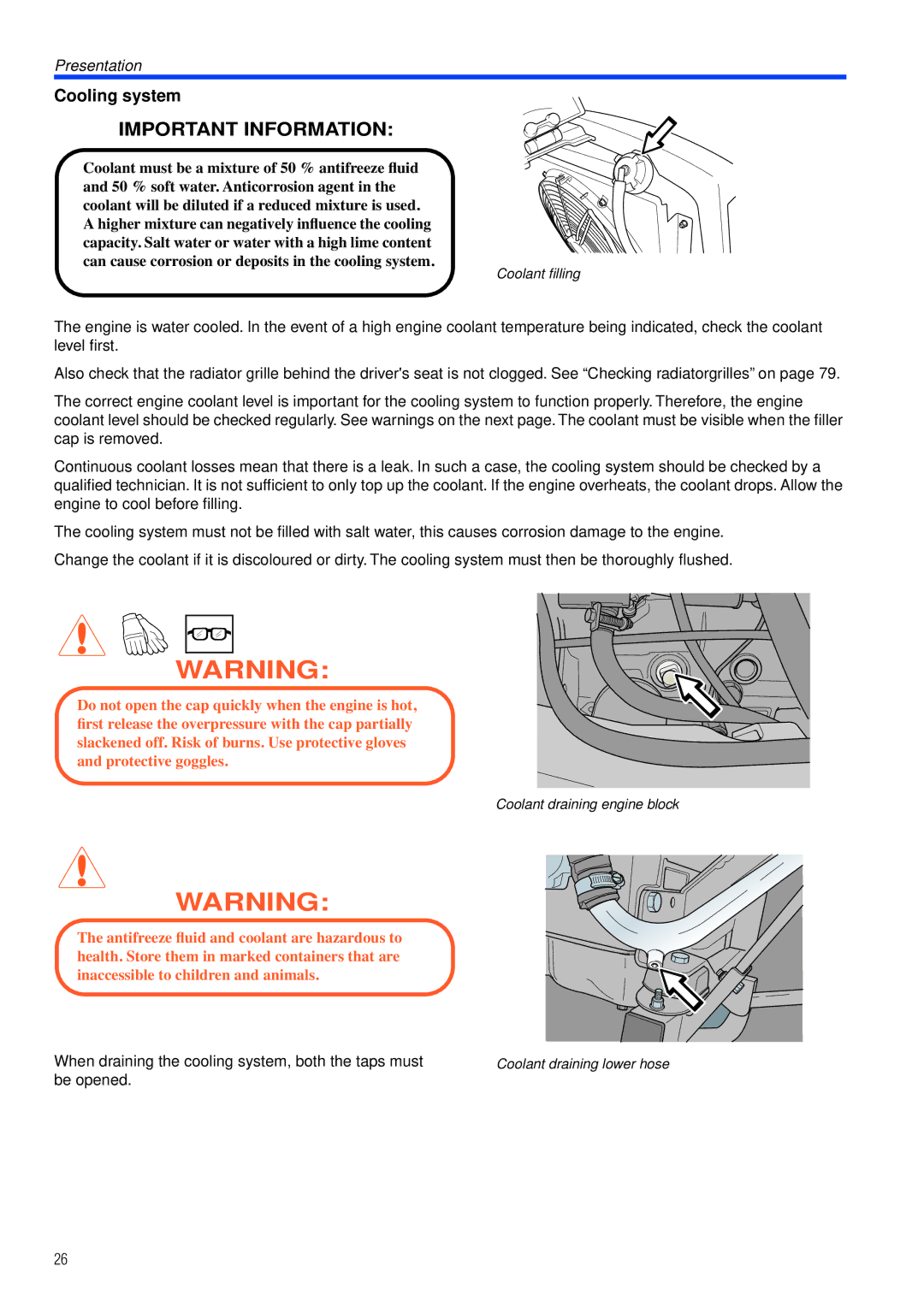
Presentation
Cooling system
IMPORTANT INFORMATION:
Coolant must be a mixture of 50 % antifreeze fluid and 50 % soft water. Anticorrosion agent in the coolant will be diluted if a reduced mixture is used. A higher mixture can negatively influence the cooling capacity. Salt water or water with a high lime content can cause corrosion or deposits in the cooling system.
Coolant filling
The engine is water cooled. In the event of a high engine coolant temperature being indicated, check the coolant level first.
Also check that the radiator grille behind the driver's seat is not clogged. See “Checking radiatorgrilles” on page 79.
The correct engine coolant level is important for the cooling system to function properly. Therefore, the engine coolant level should be checked regularly. See warnings on the next page. The coolant must be visible when the filler cap is removed.
Continuous coolant losses mean that there is a leak. In such a case, the cooling system should be checked by a qualified technician. It is not sufficient to only top up the coolant. If the engine overheats, the coolant drops. Allow the engine to cool before filling.
The cooling system must not be filled with salt water, this causes corrosion damage to the engine.
Change the coolant if it is discoloured or dirty. The cooling system must then be thoroughly flushed.
WARNING:
Do not open the cap quickly when the engine is hot, first release the overpressure with the cap partially slackened off. Risk of burns. Use protective gloves and protective goggles.
Coolant draining engine block
WARNING:
The antifreeze fluid and coolant are hazardous to health. Store them in marked containers that are inaccessible to children and animals.
When draining the cooling system, both the taps must | Coolant draining lower hose |
be opened. |
|
26
